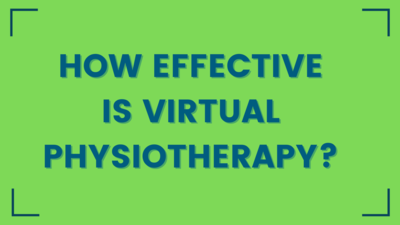
Virtual physiotherapy has become trendy lately. Due to covid and stay at home orders many clients were forced to seek virtual treatment including physiotherapy. Virtual physiotherapy is the use of technology to deliver physiotherapy services remotely. Virtual physiotherapy has its advantages, but I don't think it's as effective as traditional, in-person physiotherapy. Palpation remains a fundamental of physiotherapy assessment. And in my opinion, this is best done in person. That being said, there is a place for virtual physiotherapy services. Virtual physiotherapy can be used to supplement traditional, in-person treatments. For example, if a client is receiving weekly in-person physiotherapy treatments, virtual check-ins can help to ensure that they are staying on track with their rehabilitation plan and progressing as expected. Virtual physiotherapy can also be used to provide education and support to clients who are unable to access traditional services due to geographical location or financial constraints. In conclusion, while virtual physiotherapy has its limitations, it can be a valuable tool for physios and their clients.
Virtual physiotherapy involves the use of video conferencing to provide physiotherapy treatment to patients. Virtual physiotherapy can be used to treat a variety of conditions, including back pain, neck pain, and joint pain. Virtual physiotherapy can also be used to improve range of motion and flexibility. While virtual physiotherapy has become popular due to the convenience it offers, there are some drawbacks to this type of treatment. One of the biggest drawbacks is that it is difficult to assess a patient's condition without being able to physically touch and palpate the affected area. Another drawback is that Virtual physiotherapy can be less effective than traditional physiotherapy in treating more serious or chronic conditions.
How to book an appointment?Recent posts
- What Is Mobile Physiotherapy? Everything You Need To Know
- Physiotherapy Exercises Following An Ankle Fracture: Safe And Effective Rehabilitation Moves
- Highest Paid Physiotherapist In Australia: How Much Do They Earn?
- Physiotherapy Referrals In Australia: What You Need To Know
- How To Rehab After A Knee Replacement Surgery